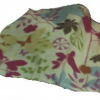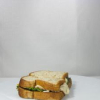115
click to vote
CVPR
2010
IEEE
15 years 9 months ago
2010
IEEE
Hierarchical conditional random fields have been successfully applied to object segmentation. One reason is their ability to incorporate contextual information at different scales....
105
click to vote
CVPR
2010
IEEE
15 years 9 months ago
2010
IEEE
Many feature detection algorithms rely on the choice of scale. In this paper, we complement standard scaleselection algorithms with spatial regularization. To this end, we formula...
CVPR
2010
IEEE
15 years 9 months ago
2010
IEEE
Given a set of algorithms, which one(s) should you apply to, i) compute optical flow, or ii) perform feature matching? Would looking at the sequence in question help you decide? I...
106
click to vote
CVPR
2010
IEEE
15 years 9 months ago
2010
IEEE
Many computer vision problems rely on computing histogram-based objective functions with a sliding window. A main limiting factor is the high computational cost. Existing computat...
CVPR
2010
IEEE
15 years 9 months ago
2010
IEEE
This paper presents a complete analytical characterization of a large class of central and non-central imaging devices dubbed linear cameras by Ponce [9]. Pajdla [7] has shown tha...
112
click to vote
CVPR
2010
IEEE
15 years 9 months ago
2010
IEEE
We present an imaging framework to acquire 3D surface scans at ultra high-resolutions (exceeding 600 samples per mm2 ). Our approach couples a standard structured-light setup and ...
CVPR
2010
IEEE
15 years 9 months ago
2010
IEEE
For object category recognition to scale beyond a small number of classes, it is important that algorithms be able to learn from a small amount of labeled data per additional clas...
114
click to vote
CVPR
2010
IEEE
15 years 9 months ago
2010
IEEE
Modeling moving and deforming objects requires capturing as much information as possible during a very short time. When using off-the-shelf hardware, this often hinders the resolu...
CVPR
2010
IEEE
15 years 9 months ago
2010
IEEE
Food recognition is difficult because food items are deformable objects that exhibit significant variations in appearance. We believe the key to recognizing food is to exploit the...
104
Voted
CVPR
2010
IEEE
15 years 9 months ago
2010
IEEE
Dynamic programming (DP) has been a useful tool for a variety of computer vision problems. However its application is usually limited to problems with a one dimensional or low tre...


